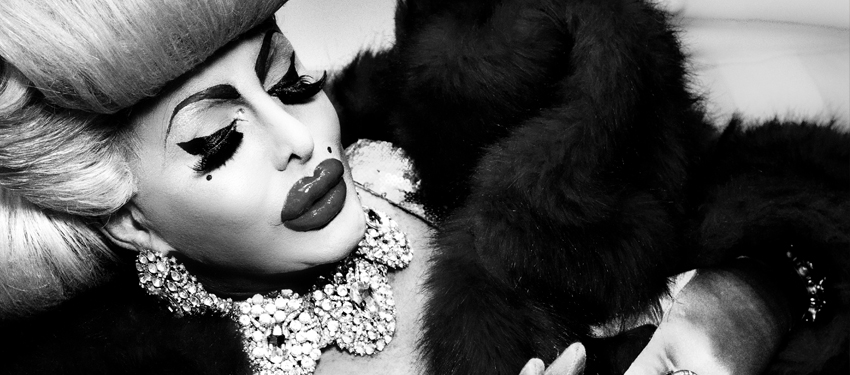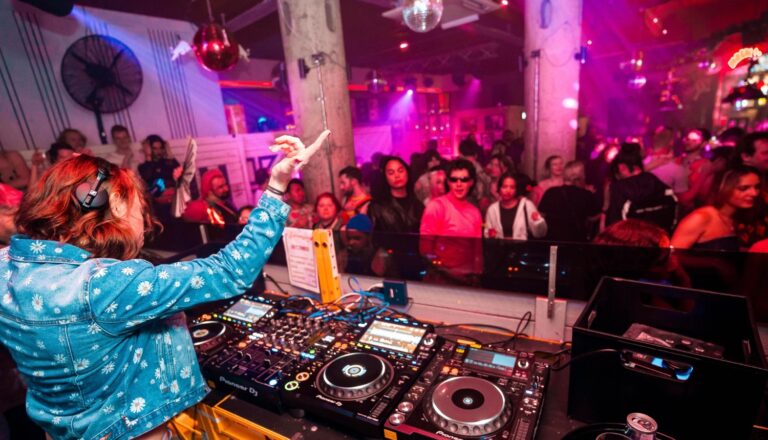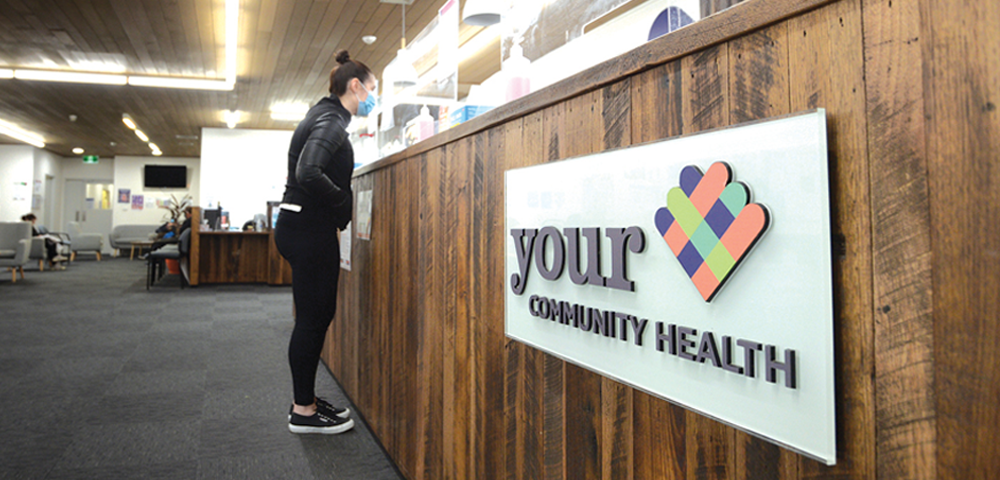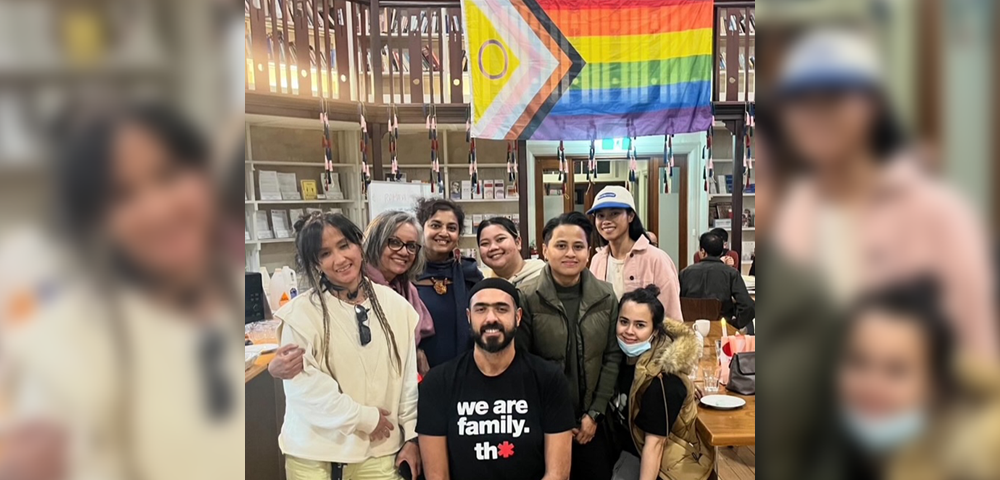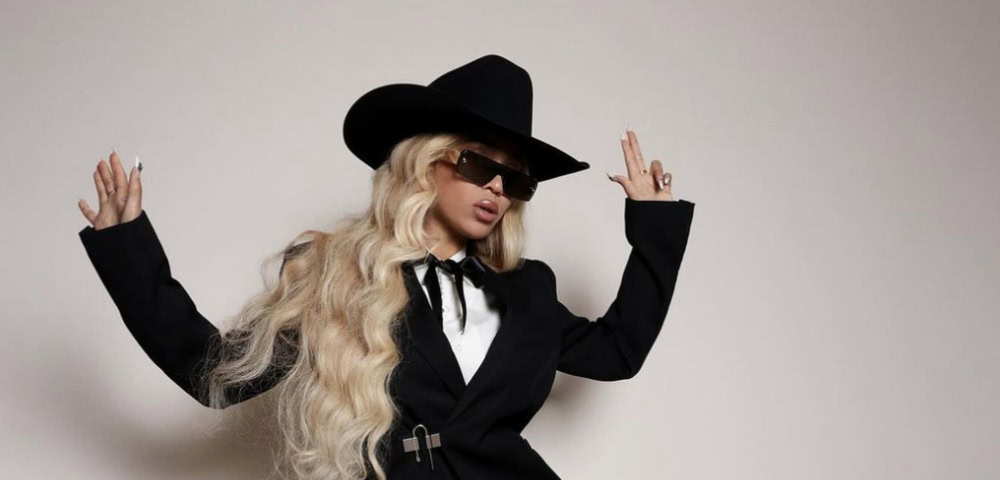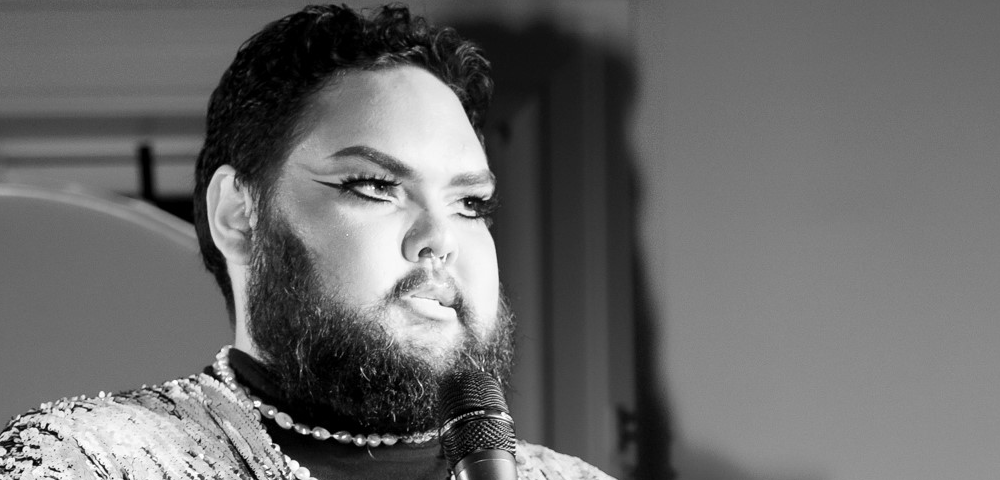
I will survive

As gay bars continue to close and gay ghettos across Australia get less and less ghetto, an entire generation of drag queens has had to find ways to adapt. In a city where, for many, the height of drag was a decade ago, Benjamin Riley finds out how things have changed for the stars of another age.
—
“A SUCCESSFUL night is hanging onto the people,” Paris says as she applies a few last-minute touch-ups.
It’s Monday night at the iconic Prince of Wales in St Kilda, and the small crowd is waiting to see a performance by one of Melbourne’s best-known drag queens. Paris has a tiny, makeshift dressing room, separated from the main bar area by just a curtain rigged up across the narrow stage. Piles of costumes and heaped stage equipment fill the space, and a single bright lamp illuminates a makeup case and a gin and tonic sitting on a flimsy Formica table.
Paris is well-spoken, but her voice has an edge of gravel, unmistakably Australian: “Even if it’s the middle of winter and it’s wet and it’s cold… if there’s 20 people when you walk into a room and there’s 20 people a couple of hours later, that’s a good night.”
She finally emerges from behind the curtain to screams and applause and blaring music. Decked out in a feathered headdress and shimmering gown, Paris owns the room as she lip-syncs to Bonnie Tyler’s cover of Two Out of Three Ain’t Bad. Halfway through the song she takes her performance off the stage and into the audience, working the crowd as she mimes, right up in people’s faces.
After the number Paris addresses the patrons, almost shouting into the mike, out of breath from her very physical performance. Her sidekick is a younger drag queen, a Kiwi named Stella Roadkill. Stella is skinny and gangly, more Olivia’s Let’s Get Physical than Kylie’s Showgirl, and stands awkwardly beside the more experienced drag queen — Paris is in charge, but there is a playful affection between them.
Talking to the room, Paris fixates on a couple sitting in a booth: “I haven’t been in love for a long time — the days where I can’t clear up my syphilis no one wants me. But there is a romantic table. Aren’t they lovely.”
She banters with the crowd for a while, then stops briefly at the bar for another drink before disappearing behind the curtain once more to reflect on how the night is going.
“It’s always good to get the first one over and done with, a little adrenaline rush. I think that’s a healthy thing, I think as soon as you lose that you’ve become complacent,” she argues.
Paris says the couple in the booth were an obvious choice to pick on; they seemed to be enjoying themselves, and they didn’t shut down when she engaged with them. But that’s not always the way it goes.
“If you can’t pick up on anyone else anywhere in the room, call it quits. Don’t flog a dead horse.”

THE demand for drag shows at Melbourne venues has seen a steady decline over the past 15 years as clubs close down and the scene has moved gradually away from its spiritual home in Prahran, along the once-legendary Commercial Rd. What just 10 years ago was a thriving gay strip has only one remaining gay venue, with the rest either clustered in Collingwood’s grungier gay enclave or scattered across more isolated locations.
For Paris, the money isn’t in gay venues anymore, it’s in corporate gigs and private parties. Businesses will pay top dollar to have a drag queen at their function, and she said for a while it seemed like every Jewish parent in Melbourne wanted a drag queen at their son’s bar mitzvah. The decline of Melbourne’s drag scene even took Paris out of the country — she spent two years working at a Macau casino, putting on shows for some of the world’s richest people.
With the popularity of drag growing outside of the gay community, Paris has remained afloat. She has adapted. It isn’t unusual for her to go from the rougher crowd of the Prince of Wales one night, where being crass is encouraged and even celebrated, to a corporate gig the next day, with expectations of a more “above the belt” standard.
Paris remains one of a few drag queens whose names still carry weight in Melbourne’s gay scene, years after what many consider Melbourne drag’s heyday through the 1990s.
Another of Melbourne’s remaining big names is Tabitha Turlington, who has hosted The Friday Night Project at St Kilda’s GH Hotel for the past five years. The night is a showcase of Melbourne’s drag performers, new and old. While Paris cuts an imposing, extravagant figure, like something from an old movie, Tabitha has a more “natural” look, without the enormous wigs and lips. She’s more energetic, even hyperactive.
Like Paris, Tabitha takes her ability to work a room very seriously. While cutting remarks were once a staple of audience interaction, she argued it was more important now to take the audience along for the ride. Hanging on to every punter is important. Tabitha has also adapted, even as she remains nostalgic for a different time.
“In one way it’s great that gay people can now just go to their local to drink,” she acknowledged.
“But on another side of it… it’s nice to come to a place where you’re surrounded by people who are the same as you.”
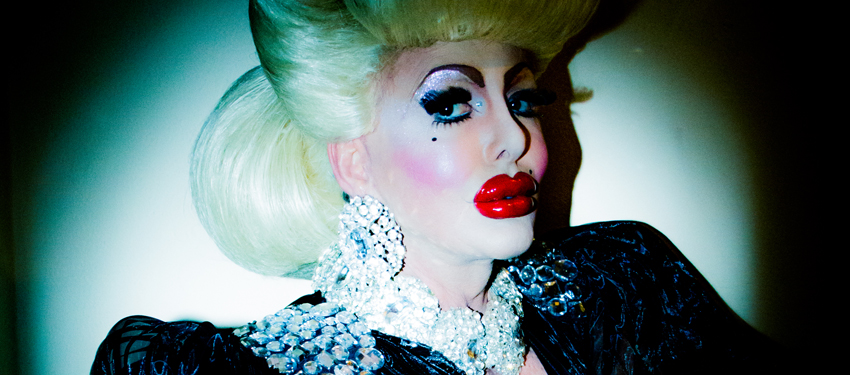
KERRIE Le Gore, a Melbourne drag legend, was there to see some of the current scene’s biggest names launch their careers. At the height of her popularity half the city’s gay community would come along when she hosted her infamous Burke’s Backyard spoof, Le Gore’s Backyard.
“Tabitha was Toby, standing three rows from the front,” she said.
“They were packed in, could hardly move, and you’d see this young boy — and I found out later he was 16 — that would watch me every week. And then two years later I met Tabitha.”
Tabitha, Paris and countless others speak fondly of Kerrie, who retired a few years ago. She enjoyed unprecedented celebrity status at the height of the drag scene in the 1990s. There at the scene’s genesis in the early 1980s, Kerrie even attracted the attention of politicians and senior public servants when she started incorporating safe sex messages into her performances for a community reeling from the impact of AIDS. In one of her best known public service announcements she asked two male audiences members on stage, wrapped one in glad wrap and asked the other to lick the first’s plastic-covered rear end to demonstrate safe rimming.
She played this vital role not only as a celebrity, but as a respected community leader.
“I was never, ‘do you know who I am?’ But any venue I’d go to, if I had 20 people with me, and sometimes I did, they would just say, ‘are they with you, Kerrie?’ I would say yes and they’d say go straight through,” she recalled.
In the 1990s drag in Melbourne revolved around the legendary 3 Faces nightclub on Commercial Rd. At its peak, huge amounts of money were pumped into opulent productions, and punters were willing to pay cover charges and premium drink prices for the privilege. The productions were supported by a storage warehouse where drag queens would work at sewing machines on the outlandish costumes. Thousands of dollars would regularly be spent on the most expensive and high-quality costume materials.
If 3 Faces had been drag’s heart, the club’s closure in 1999 probably marks the end of a golden age in Melbourne. Although the venue still hosted drag shows when it re-opened under new ownership as The Market, Kerrie and Paris both said it wasn’t the same.
It too closed for good three years ago. For many its replacement by a straight venue sounded a death knell for the gay strip.
But even as drag in the gay community began to decline, Paris argued a concurrent increase in drag’s mainstream appeal could be traced back to an earlier point. The year was 1994, and three drag queens on a bus through the outback took the world by storm. The Adventures of Priscilla, Queen of the Desert was a critical and commercial success, and created opportunities for Melbourne’s drag icons to find work outside the community.
“People saw the movie and all of a sudden every man and their dog wanted drag at their staff Christmas party,” Paris said.
“Prior to that (doing) drag was still a little bit scary. Often you’d run out of your flat and get in a cab and the first thing you’d do was lock the door.”
For Paris’ career a major turning point was the opening of Melbourne’s Crown Casino in 1997, when she and a couple of other queens were hired to perform for largely straight audiences. From then on corporate and private gigs became a staple. And they had to — as more gay venues began to close around Melbourne, many opportunities for paid work closed with them.
It’s a long time since Kerrie Le Gore could turn up to any gay club in the city and walk straight in.
“I really don’t think that happens any more. Even Tabitha was saying to me she doesn’t have any pull over who gets into the Greyhound any more,” Kerrie said.
“I mean, Tabitha and Paris and all of them would say, ‘Oh look, you just rock up, they wouldn’t not let you in.’ And I go, well I don’t like to walk up when I’m with friends and then they have to pay and I don’t.”

THE GH Hotel made the news earlier this year when it introduced expensive ticketing and a special area of the club, The Hen Pen, marketed specifically at hen’s nights. The moves were a response to concerns from gay patrons that hen’s nights were “taking over” the venue.
While the GH have remained staunch in their support of drag shows as a core part of the business, they have capitalised on their broadening appeal outside the gay community. The venue acknowledged it was an ongoing challenge to balance these changes with a desire not to alienate their loyal gay audience.
Alan Mayberry has been writing about Melbourne’s drag scene for 20 years, and claimed its gay following might not be so loyal.
“Gone are the days when venues can afford to splash $40,000 on a show… when audiences aren’t spending mega bucks at the bar and are reluctant to pay $20-plus entry fees the shows are no longer sustainable,” he said.
Mayberry also argued younger audiences struggled to connect with some of the older drag queens, viewing them perhaps as relics from a different era. Some were even beginning to realise their glory days might be over.
But even as opportunities for drag queens within the gay community diminish, more and more young performers continue to flood the venues. Some, like Stella Roadkill at the Prince of Wales, have managed to forge relationships with older drag queens like Paris, and Tabitha’s Friday Night Project at the GH has also become a place for young drag queens to get their start. In her mind Tabitha has an obligation to encourage new talent, an attitude that may not be shared by all of her peers. She said some have gone as far as to sabotage younger performers so they themselves can remain in the spotlight a little longer.
“We’ve had our time, and we’ve had a great time and a wonderful time, and I think we need to let the stages go sometimes,” she said.
For Tabitha, adaptation is ceding the stages of the gay community to a new generation with grace and respect. For Paris, adaptation is something else entirely — like the GH itself, she has looked outside the community for new opportunities, and she had found them.
Success is in the interpretation.
“I’m sure a lot of drags like to do drag for themselves and for their peers and their mates, to be in that environment. I’m also sure a lot of them could possibly be uncomfortable out of the gay scene, out of the comfort zone,” Paris said.
“I’ve just learned over the years to stand tall, shoulders back, be polite, be hospitable … don’t ever take on attitude.”

AT the Prince of Wales, Paris is about to go on stage again, talking as she makes a quick costume change in the cramped backstage area. Even when she’s not on stage she’s “on”, performing as she chats.
“It’s quite a funny thing in Melbourne, you’re doing the clubs, doing the gay scene, all very relaxed, nice and chilled. No one has any expectations. They’re all out just for a bit of fun, a laugh and a giggle,” she says as she adjusts her wig and checks her make-up.
“A quiet night’s a quiet night, but I always have the attitude, two people, 200 or 2000, you just get out there and do what you’ve gotta do — flog it, try to entertain the masses.”
**This article first appeared in the July edition of Star Observer. The August issue will hit the stands tomorrow (July 17) in Melbourne, Sydney, Brisbane, Adelaide and Canberra. Click here to find out where you can grab your free copy.
